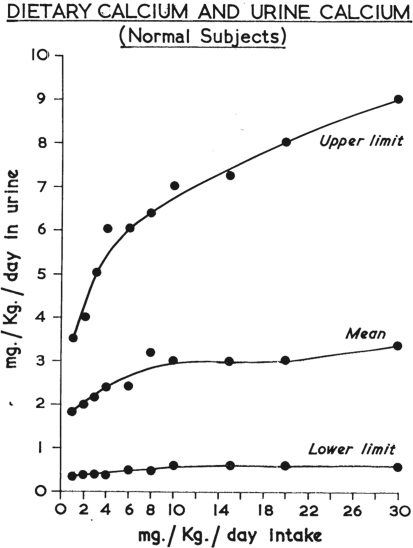The concept of bone quality has been long known, although perhaps not in the current context. Some of the earliest references to “bone quality” appear to be in the context of animal husbandry. Burdett-Coutts, referring to the purchase of horses, commented at the end of the 19th Century, “And so he sets himself to think how he can supply the dealers who have been round during the past week, wanting something on short legs, with bone quality, and substance…” [4]. The notion that it might apply to disease appears in the mid 20th Century: Bell remarked, “Rickets is the only condition in which alterations of bone quality have been demonstrated in this laboratory…” [2]. The increase in rates of fracture in elderly persons was well established in the late 1800s [7]. However, researchers questioned whether or not this related to bone quality per se. Knowelden and his colleagues, commented in 1964, “There is indeed no mystery about the immediate cause of any fracture – it is, of course, that the stress produced by the forces applied to the bone has exceeded the breaking stress. There is no proof from either animal or human experiments that bone quality, that is breaking stress, decreases in old age. The bone is, of course, decreased in amount - the compact shaft walls and trabeculae becoming thinner and therefore weaker.” Thus, they presumed the quality of bone—if quality is defined as breaking strength—as a material (contrasted to bone as a structure) was similar regardless of age.
However, bone quality may be defined in many ways. Elsewhere in this issue, we devote a symposium to bone quality. One of the striking points is the more or less subtle differences in definitions of “bone quality.” Boskey et al. [3] comment, “The term ‘bone quality’ is frequently used by clinicians, basic scientists, and engineers. However, do they mean the same thing?…there are many aspects of bone quality that vary in importance and scope with the person providing the definition” while Paschalis et al. [6] suggest, “Bone quality encompasses the structural and material properties of bone.”
Nordin [5] explored another aspect of bone quality: calcium content, particularly its relationship to bone strength. He, as others, found a wide range of dietary “calcium requirements” for individuals to maintain a balance of intake and excretion (Fig. 10). Not only did subjects have a wide range of absorption, they also had a wide range of excretion, only partly related to dietary intake (Fig. 12). Dietary calcium content was earlier related to maximum strength of the bone in rats [1]. In reviewing other evidence, Nordin concluded, “Experimental work, the significance of which has not been sufficiently appreciated, shows that calcium deficiency causes osteoporosis in animals, whereas protein deficiency does not…It cannot be claimed that all forms of osteoporosis can be explained on the lines presented here, but it is believe that so-called postmenopausal and ‘senile’ osteoporosis could be accounted for in this way…” These continue to be commonly held views and undoubtedly account for the dizzying array of calcium supplements marketed throughout the world.
Fig. 10.
Calcium requirement of 32 normal subjects calculated from the calcium balances at more than one level of intake. (Reprinted with permission and © Lippincott Williams & Wilkins, from Nordin BEC. Osteomalacia, Osteoporosis, and Calcium Deficiency. Clin Orthop Relat Res. 1960;17:235–258.)
Fig. 12.
Mean urinary calcium and lower and upper limits in normal subjects at different levels of intake. Note small change in mean excretion with changing intake. (Reprinted with permission and © Lippincott Williams & Wilkins, from Nordin BEC. Osteomalacia, Osteoporosis, and Calcium Deficiency. Clin Orthop Relat Res. 1960;17:235–258.)
References
- 1.Bell GH. The strength and size of bone in relation to calcium intake. J Physiol. 1941;100:299–317. doi: 10.1113/jphysiol.1941.sp003944. [DOI] [PMC free article] [PubMed] [Google Scholar]
- 2.Bell GH. Remarks on the growth and healing of bone. Brit Med Bull. 1945;3:76–79. [Google Scholar]
- 3.Boskey AL, Donnelly E, Kinnett JG. Bone Quality: From Bench to Bedside: Opening Editorial Comment. Clin Orthop Relat Res. 2011. DOI: 10.1007/s11999-011-1785-2 (this issue). [DOI] [PMC free article] [PubMed]
- 4.Burdett-Coutts MP. The Brookfield Stud of Old English Breeds of Horses. London: Sampson Low, Marston & Co. Ltd.; 1891. [Google Scholar]
- 5.Nordin BE. Osteoporosis and calcium deficiency. Proc Nutr Soc. 1960;19:129–137. doi: 10.1079/PNS19600035. [DOI] [PubMed] [Google Scholar]
- 6.Paschalis EP, Mendelsohn R, Boskey AL. Infrared Assessment of Bone Quality: A Review. Clin Orthop Relat Res. 2011. DOI: 10.1007/s11999-010-1751-4 (this issue). [DOI] [PMC free article] [PubMed]
- 7.Vincent PJ, Urist MR. The Appearance of Osteoporosis in Ambulatory Institutionalized Males. Clin Orthop Relat Res. 1961;19:245–252. doi: 10.1007/s11999-011-1876-0. [DOI] [PMC free article] [PubMed] [Google Scholar]




